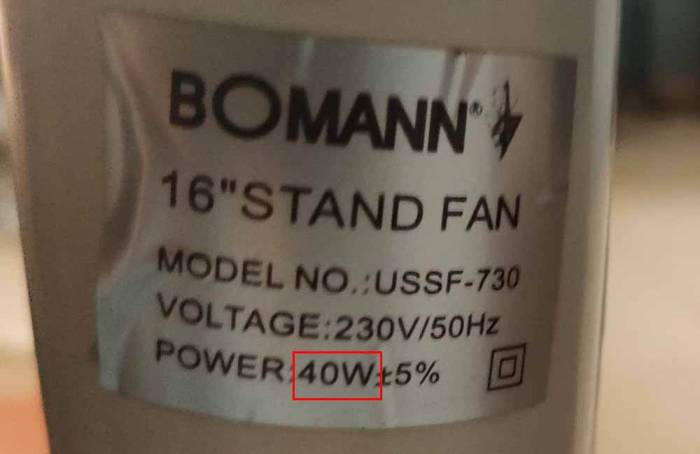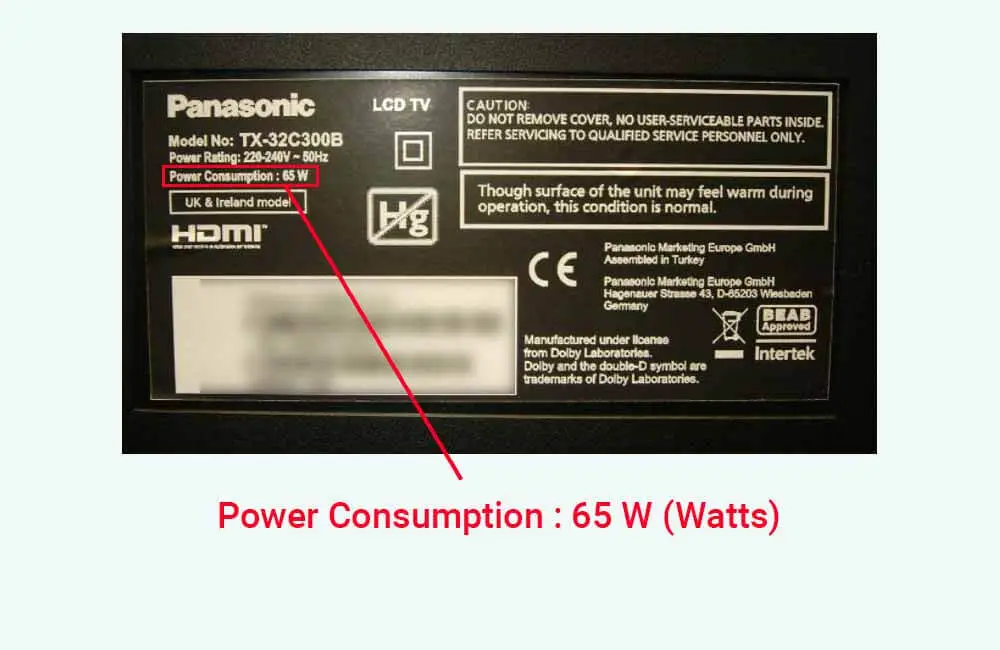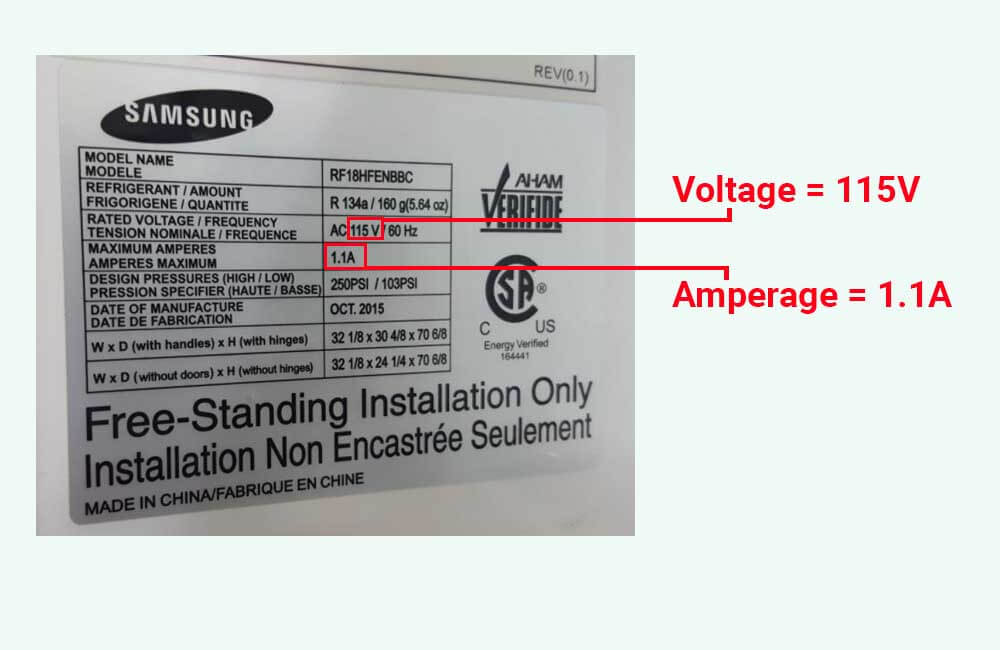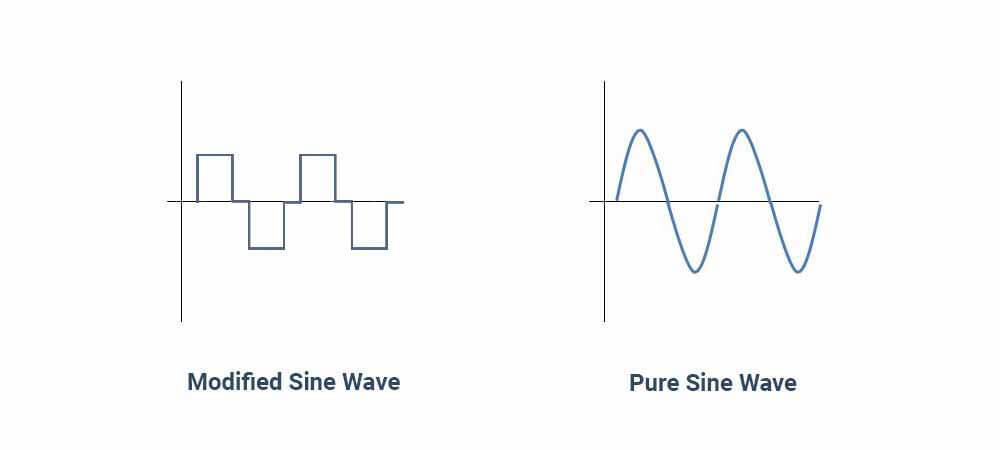The size of the inverter that you need will mainly depend on 2 factors:
- The power usage and type of appliances you’re trying to run on the inverter.
- The specs of your battery bank.
In this article, I explain how these factors come into play, and I discuss the specifications you should pay attention to when choosing an inverter.
After reading this, you’ll know the steps that you should take in order to properly size the inverter that you need.
What size inverter for a 100Ah battery?
For appliances that use a relatively low amount of power, such as laptops, lights, TVs, and small fridges, a 500W inverter will likely do the job. However, if you’re trying to run a proper fridge, an air conditioner, a coffee machine, or an electric kettle, you’ll likely need 1500 to 2000 Watts of inverter power.
But it is important to note that the wattage rating of an inverter is not the only thing that matters when sizing one.
There are 4 main ratings that you should consider when trying to size an inverter:
- Continuous Power rating in Watts (W): This rating represents the maximum amount of power that the inverter can supply continuously. The Continuous Power rating of the inverter you choose should preferably be greater than your maximum power usage.
- Surge Power Rating in Watts (W): This rating represents the maximum amount of power that the inverter can supply briefly (a few seconds at most). The Surge Power rating of the inverter you choose should be greater than the surge wattage of your appliances.
- Input Voltage in Volts (V): This rating relates to the voltage of your battery. A 12V battery will require a 12V inverter, and a 24V battery will require a 24V inverter.
- Output Waveform: This will indicate how smooth of an AC waveform the inverter produces at its output. While some appliances, such as refrigerators and air conditioners, require the smoothest AC wave possible (Pure Sine Wave), other appliances, such as laptops and lights, can operate on a Modified Since Wave.
In order to determine the right specs for your inverter, each of these ratings requires a specific question to be asked:
- Continuous Power: What is the maximum amount of power (in Watts) you’re planning on pulling from the battery?
- Surge Power: What is the highest Surge Power (in Watts) usage expected from your appliances?
- Input Voltage: What is the nominal voltage (in Volts) of your battery?
- Output Waveform: Are you planning on running any inductive loads?
Once you have the answers to these questions, you’ll easily be able to find the right specs for your inverter.
In the following sections of this article, I’ll provide a more in-depth explanation of these ratings, and I will show you how to answer each of the questions above.
Determining the Continuous Power rating of the inverter
The continuous power rating on an inverter indicates the amount of electrical power (in Watts) that the inverter can continuously deliver at its output. And generally, this is the main rating you’d find on an inverter.
Therefore, before you choose an inverter, you’ll have to make sure that its Continuous Power rating is greater than your power usage.
For example, if you’re trying to run a 100W appliance, the continuous power rating of the inverter has to be more than 100W (200 watts for example). If you’re trying to run 5 100W appliances at once, the inverter has to be rated at more than 500 watts.
So, before you can determine this particular specification, you’ll have to account for the power usage of your appliances. This can be done by following these 3 simple steps:
- List all the appliances you’re planning to run on your 100Ah battery and inverter.
- Determine the power rating of each appliance.
- Determine the highest power usage you suspect the inverter will have to offset.
Once you know what your appliances are, you’ll have to find the power usage in Watts of each of these appliances.
This power usage (or Wattage) is usually found at the back, side, or bottom of the appliance along with other electrical specs. What you need to find is a value in Watts (W).
For example, the following image is from a specification sticker on a standing fan that uses 40 Watts of power:

And here’s another image of the specs at the back of a 32″ LCD TV that uses 65 watts of power:

However, it is important to note that sometimes, the wattage of the appliance is not specified directly.
But not to worry, even if the Wattage of the device is not provided, chances are, the Voltage and Amperage will be specified. And you can use these 2 electrical ratings to estimate the power usage of the appliance via the following formula:
Wattage (Watts) = Voltage (V) x Current (A)
For example, the following image is from a specifications label on a refrigerator:

The manufacturer doesn’t specify the power usage but specifies 115 Volts as the voltage and 1.1 Amps as the Amperage. The power usage of this fridge can be estimated as such:
Wattage (Watts) = Voltage (V) x Current (A)
Wattage (Watts) = 115 V x 1.1 A
Wattage (Watts) = 126.5 W
Using our simple formula, we’ve estimated that our fridge uses 126.5 Watts of power.
If the electrical specifications of one of your appliances are nowhere to be found, your last resort would be to use an electricity monitoring device, such as the Kill-A-Watt meter.
In any case, once you know the power usage of each of your appliances, the last step is to determine the maximum amount of power you’re planning to use.
For example, let’s say that we’re trying to run the same 3 appliances used in our examples above:
- The TV, which uses 65 Watts of power.
- The standing fan, which uses 40 Watts of power.
- The fridge, which we’ve estimated to use 126.5 Watts of power.
Now, obviously, the fridge is going to be plugged in all the time. This means that our inverter will need to be able to deliver 126.5 watts of power at all times.
But, at some point, we might want to use the TV and fan at the same time. So, at some point, our total power usage will be:
Total Power Usage (Watts) = Power Usage of the TV (W) + Power Usage of the fan (W) + Power Usage of the fridge (W)
Total Power Usage (Watts) = 65 W + 40 W + 126.5 W
Total Power Usage (Watts) = 231.5 W
Up to this point, it seems that a 300W inverter could do the job just fine.
However, after you determine the Surge Power rating of the inverter that you need, it might turn out that you’ll need a bigger inverter, especially if you’re planning on running a refrigerator.
The next section explains why.
Determining the Surge Power rating of the inverter
The Surge Power rating on an inverter indicates the amount of electrical power (in Watts) that the inverter can supply for a brief moment. The Surge Power rating of an inverter is usually double (or even triple in some cases) its Continuous Power rating.
For example, a 500W inverter that can continuously supply up to 500 watts of power, will usually also be able to supply 1000 watts of power for a few seconds if needed.
The Surge Power rating of an inverter is very useful if you’re planning on running appliances such as refrigerators, air conditioners, or in general, anything with a motor on your 100Ah battery.
This is because these appliances require a relatively huge amount of power when first starting.
For example, a refrigerator that is rated at 100 Watts, might use 500 to 1000 Watts of power for a fraction of a second when its compressor kicks in. So, a 200W inverter might be able to run the refrigerator, but will probably not be able to start it.
Related topics:
What size inverter do I need to run a fridge?
What size inverter to run an air conditioner?
So, if you’re trying to run anything that involves heating, cooling, or motion, a good rule of thumb would be to multiply the running wattage of that particular appliance by 10. This should give you an idea of the surge power your inverter should be able to handle.
The appliance might not need that much power to kick off, but it’s better to have an oversized inverter than an undersized one.
Again, if you want to be more precise, you can use an electricity monitoring device. Just plug the monitoring device into the outlet, plug your appliance into it, and turn the appliance on. For a brief moment, the electricity monitor will display the surge power of that appliance.
To get a better understanding of this, let’s use the same example from the previous section and let us assume we’re trying to run the same 3 appliances:
- The TV: 65 Watts of power.
- The standing fan: 40 Watts of power.
- The fridge: 126.5 Watts of power.
Now, using our rule of thumb, we can estimate the surge power that our fridge might require:
Surge Power required (Watts) = Running Power (W) x 10
Surge Power required (Watts) = 126.5 W x 10
Surge Power required (Watts) = 1265 W
It is also important to note that appliances such as refrigerators and air conditioners turn on and off automatically. So, the surge wattage of our refrigerator can reoccur multiple times during the day.
Since we might use all of these appliances at once at some point, our inverter needs to be able to still supply power if the power usage of the fridge surges while the fan and the TV are on.
So the Surge Power rating of the inverter needs to be greater than the surge power of the fridge, the running power of the TV, and the running power of the fan combined:
Total Surge Power (Watts) = Surge Power of the fridge (W) + Power Usage of the TV (W) + Power Usage of the fan (W)
Total Surge Power (Watts) = 1265 W + 65 W + 40 W
Total Surge Power (Watts) = 1370 W
According to our estimates, the inverter needs to have a Surge Power rating greater than 1370 Watts. A 750W (Cont. power) inverter will have a Surge Power rating of 1500 Watts, which should be enough in this case.
Next on the list is the Input Voltage of the inverter.
Determining the Input Voltage rating of the inverter
Inverters turn Direct Current (DC) power into Alternating Current (AC) power, but while doing that, they also convert the low voltage of a battery bank (12V, 24V, 48V) connected to their input, to a higher voltage (110-120V, 220-240V) at their output.
So, when choosing an inverter, make sure the rated Input Voltage of the inverter (12V for example) matches the nominal voltage of your 100Ah battery (12V for example).
For example, while this inverter from Renogy is rated at 12 Volts (DC) at its input, this Giandel inverter is rated at 24 Volts (DC). Both of these inverters convert the voltage to 120 Volts (AC) at their output but are designed for different battery voltages.
Determining the Output Waveform of the inverter
As mentioned above, inverters convert the DC power from your battery into the AC power that most appliances require. However, the waveform of the alternating current at the output of the inverter will depend on the type of inverter you’re using.
Generally, there 2 types of inverters on the market:
- Modified Sine Wave inverters (MSW), which output a square waveform.
- Pure Sine Wave inverters (PSW), which output a smoother waveform.

Modified Sine Wave inverters are generally cheaper but are significantly less efficient, meaning that your appliances will consume significantly more energy on an MSW inverter than they would on a Pure Sine Wave inverter.
In addition to that, the square waveform that these inverters output, can cause certain appliances (such as refrigerators and air conditioners) to fail or even sustain permanent damage in the long run.
On the other hand, Pure Sine Wave (PSW) inverters produce the same kind of waveform you’d find in a typical grid-tied AC outlet. These inverters may cost more, but they are more energy-efficient, last longer, and would allow your appliances to run properly.
Here’s a video in which you can see a comparison between these 2 kinds of inverters:


I was taught earlier during my internship that the way to know inverter size for a battery is by multiplying the battery’s voltage with it’s current to give us the power of the battery. For example, a 12v 100aH battery
12 * 100 = 1200W
So the maximum ideal inverter size for 12V 100aH battery is a 1.2KW inverter.
If it’s a 12V 200aH battery
12 * 200 = 2400W
So the maximum ideal inverter size for 12V 200aH battery is 2.4KW inverter, and so on.
So I don’t know if I’m right cause I have seen a 10KW 48V Prag inverter, and by my calculations;
48 * 200 = 9600W
And sometimes 24V 200aH battery is used on a 3.5KW inverter
Hey Immanuel,
Yes, sizing an inverter this way will make sure the battery doesn’t supply more power than it is – in most cases – designed to output.
However, to size an inverter correctly, you need to take your load into consideration.
Sometimes the continuous power rating of the inverter will be lower than the power rating of the battery, sometimes it will be greater.
The important thing is to make sure your inverter has the capacity to power your load, without discharging the battery faster than it is designed for.
Hope this helps.